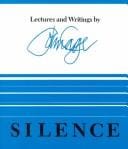Every Breath: The Simple Science of Breathing Better
Unlock the power of every breath with science-backed techniques that reduce stress, improve focus, and boost health in minutes a day.

Introduction: Why Every Breath Matters
We take between 17,000 and 25,000 breaths every single day, yet most of us never pause to consider the quality of those breaths. Each inhalation fuels every cell with oxygen, while every exhalation removes metabolic waste. In other words, your breath is the silent rhythm that keeps you alive, focused, and balanced. Learning to pay attention to "every breath" is one of the fastest, simplest, and most cost-effective ways to improve mental clarity, physical health, and emotional resilience.
Modern lifestyles—characterized by desk jobs, digital distraction, and chronic stress—have conditioned many of us to breathe shallowly, often through the mouth. This inefficient pattern signals the nervous system to remain in fight-or-flight mode, elevating cortisol and disrupting sleep. By making small, conscious shifts in how we breathe, we can flip that switch back to rest-and-digest and unlock measurable benefits in a matter of minutes.
The Science of Breathing
Breathing appears automatic, but it is one of the few bodily functions we can voluntarily control. This dual citizenship—both automatic and deliberate—makes the respiratory system a powerful gateway to the autonomic nervous system. Slow, deep nasal breathing stimulates the vagus nerve, triggering a cascade of biochemical changes: heart rate slows, blood pressure drops, and alpha brainwaves rise, producing a calm yet alert state.
Furthermore, efficient breathing optimizes gas exchange in the alveoli, increasing oxygen saturation without over-breathing. Paradoxically, taking fewer, deeper breaths often raises oxygen delivery because carbon dioxide levels remain high enough to release oxygen from hemoglobin (the Bohr effect). In short, every breath you take literally changes your blood chemistry.
Emotional Benefits of Conscious Breathing
Emotions and respiration are intertwined. Think about how you breathe when you are anxious—fast and high in the chest. Shift into laughter and your breathing becomes rhythmic and diaphragmatic. By reversing the sequence—intentionally breathing as though you are calm—you can coax your emotional state to follow. Studies published in journals like Psychophysiology show that four minutes of 4-7-8 breathing can reduce self-reported anxiety scores by up to 40%.
Over time, turning attention to every breath trains mindfulness. Anchoring awareness in the sensations of air entering and leaving the nostrils short-circuits rumination loops, creating a mental “buffer zone” between stimulus and response. This is why meditation traditions around the world, from Zen to Vipassana, place breath observation at the heart of practice.
Essential Breathing Techniques
Diaphragmatic Breathing
Also called “belly breathing,” diaphragmatic breathing engages the diaphragm fully, allowing the lungs to expand downward instead of outward. Sit or lie comfortably, place one hand on your chest, the other on your abdomen. Inhale through the nose for a count of four, letting the lower hand rise. Exhale for a count of six. Repeat for five minutes.
Box Breathing
Popularized by Navy SEALs, box breathing stabilizes the nervous system under pressure. Inhale for four counts, hold for four, exhale for four, hold again for four. The symmetrical pattern acts like a reset button, ideal before public speaking or challenging meetings.
4-7-8 Breathing
Inhale quietly through the nose for four counts, hold the breath for seven, and exhale audibly through pursed lips for eight. The extended exhalation activates the parasympathetic response, making this technique especially useful before bed.
Integrating Every Breath into Daily Life
Knowledge is only empowering when practiced. Here are simple ways to weave conscious breathing into a busy schedule:
Morning Wake-Up: Before grabbing your phone, take ten slow nasal breaths while still in bed. This sets a calm baseline for the day.
Digital Pauses: Every time you hit “Send” on an email, perform one full box-breathing cycle. You’ll reduce cumulative tension and improve focus.
Commute Calm: Whether you drive or ride public transit, turn red lights or station stops into breathing checkpoints. Inhale for five, exhale for five until the light changes.
Pre-Meal Ritual: Three deep diaphragmatic breaths before eating prime the parasympathetic system, enhancing digestion and preventing overeating.
Health Rewards You Can Measure
Research from the American Heart Association shows that six weeks of daily breathing exercises can lower systolic blood pressure by up to 9 mmHg—comparable to some first-line medications. Athletes who incorporate nasal breathing during training report improved VO2 max and quicker recovery. Even office workers notice fewer tension headaches and a 20% reduction in perceived fatigue, according to a 2022 study in Occupational Medicine.
If you wear a smartwatch, enable heart-rate-variability (HRV) tracking during breathing sessions. You’ll likely observe HRV rising in real time, an objective marker of stress resilience. These metrics turn the abstract concept of "every breath" into tangible progress, reinforcing the habit.
Common Pitfalls and How to Avoid Them
Over-Breathing: Gasping or forcing air can lead to dizziness by expelling too much carbon dioxide. Keep inhalations smooth and silent.
Mouth Breathing: The nose warms, filters, and humidifies air. Make nasal breathing your default unless exercising at high intensity.
Inconsistency: Like any skill, benefits accrue with repetition. Set calendar reminders or pair breathing with existing habits to build consistency.
Conclusion: An Invitation to Breathe Better
Every breath is an opportunity—a miniature reset button you carry everywhere. By bringing mindful attention to the inhale, optimizing the pause, and lengthening the exhale, you influence your physiology, psychology, and even longevity. The beauty lies in the simplicity: no equipment, membership, or special setting required. Start now. Take one slow, deliberate breath, feel the air glide in, pause, then sigh it out. Congratulations—you’ve just taken the first step toward breathing better for life.



